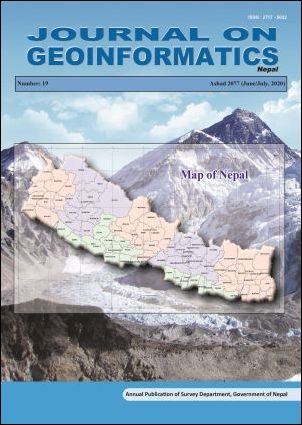Spectral Analysis of Worldview-2 Imagery in Detecting Invasive Plant Species (mistletoe) in Scots Pine Forest
DOI:
https://doi.org/10.3126/njg.v19i1.50970Keywords:
Biological invasion, Remote Sensing, NDVI, Optical satellite imageryAbstract
Mistletoe (Viscum album), a hemiparasite of Scots pine (Pinus sylvestris), is one of the major problems in the conservation of Scots pine forest in the Alps. The study area covered with coniferous plantation, a part of Bois Noir in the South Western French Alps is highly affected by mistletoe. Consequences of mistletoe infection include branch swelling and bending of the tree structure. The coniferous plantation in the study area, located in Bois Noir in the south-western French Alps, is experiencing an alarmingly high rate of tree mortality due to mistletoe infection. This study aims to assess the spectral distinctness of Scots pine in the presence and absence of mistletoe. For the management and minimization of biological invasion, detection and mapping plays a key role in forest conservation. Advancement of very high resolution (VHR) satellite imagery and aerial imagery with application of remote sensing and GIS technologies has shown a promising result in detecting, mapping and monitoring forest health. In this research, very high resolution satellite imagery WorldView-2 (panchromatic 0.5m and multispectral 2m) was used. Scots pine with mistletoe presence has low spectral reflectance in all bands, but NIR1, NIR2 and Red edge of WorldView-2 have higher ability to discriminate the mistletoe. Similarly, the vegetation index NDVI 2 (band combination of Red and NIR2) has the potential to discriminate the mistletoe. Detection of such biological invasions provides good information for effective conservation and better management of forests.




